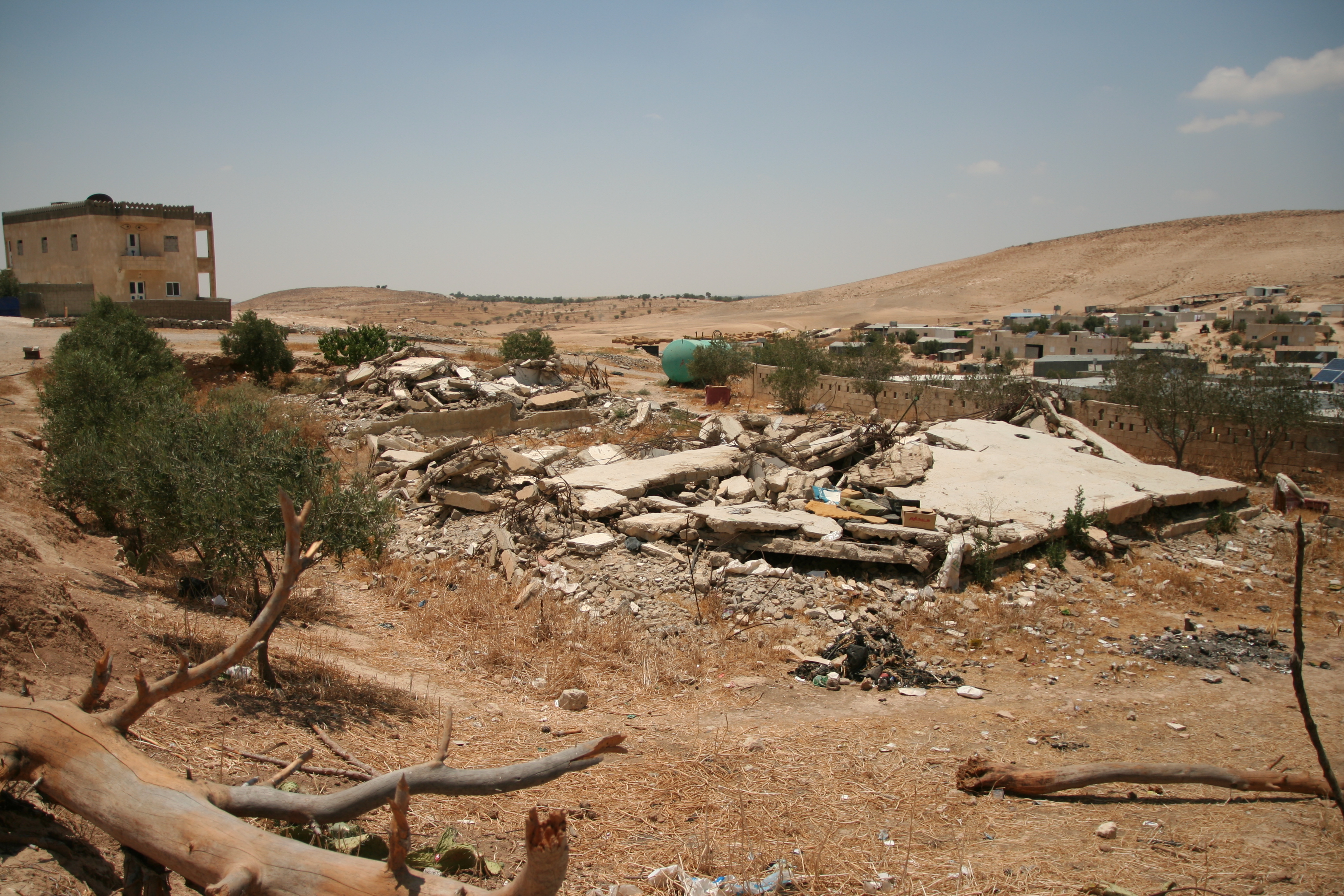Government announces plans to accelerate demolition of Umm el-Hieran; Jewish town 'Hiran' to be built over its lands
Today, on Sunday 10 November 2013, the Israeli government announced that it will accelerate the demolition of the unrecognized Bedouin village of Umm el-Hieran in the Naqab (Negev) in order to build a Jewish town to be called ‘Hiran’ on its ruins.
This announcement comes despite a legal appeal made by the people of Umm el-Hieran against the state’s eviction orders, which is still pending before the Supreme Court.
The government held a meeting on 10 November at the Kibbutz Sedeh Boker to discuss plans to establish four new Jewish settlements in the
The Government made its decision despite the Supreme Court not yet having given its verdict on the Bedouin villagers' appeal, which was submitted by Adalah on behalf of the people of Umm el-Hieran, against the order to evict them from their land. The Supreme Court has scheduled a hearing on Wednesday 20 November 2013.
These latest plans for demolitions and displacement are not the first to target the people of Umm el-Hieran. Prior to 1948, the villagers lived in Khirbet Zubaleh, located in Wadi Zubaleh, which is now part of Kibbutz Shuval. In 1948, the Israeli Military Governor in the Naqab ordered the residents to leave their village and their homes and move to the area of Kharbet el-Hazil, and then again to Kohli and Abu Keff. In 1956, they were again displaced to Wadi Atir, where they have remained until today. The villagers were then given 7,000 dunams of land to live on and cultivate, and they built houses of brick and cement, making great effort to recreate the community that had been disrupted with each forced displacement. Now 150 families, 1,000 people, all of the Abu al-Qian tribe, live in Umm el-Hieran. Today, in 2013, they remain under the threat of further forcible displacement and dispossession for the purpose of establishing a Jewish settlement on their land.
Adalah’s position regarding the government’s decision: “The establishment of Jewish settlements in the Naqab at a time when the Israeli Government is developing the Prawer Plan, under which dozens of Bedouin villages will be demolished and thousands of dunums of land confiscated, demonstrates that the primary motivation behind these plans is the government’s racist policies towards Arab Bedouin citizens. Instead of continuing the policy of dispossession against the country’s indigenous people, the government should recognize the historical rights of the Bedouin to their land, and work to open a dialogue with the people and their representatives based on the Alternative Plan proposed by the representative bodies of the Bedouin in the Naqab.”
For more information:
Read Adalah’s report, “Nomads Against Their Will: The Example of Atir-Umm el-Hieran”
Read more about the government’s plan to forcibly displace thousands of Arab Bedouin citizens in the Naqab (















